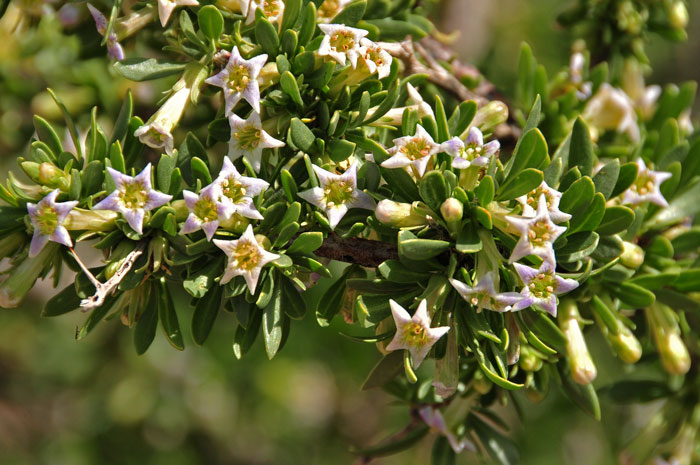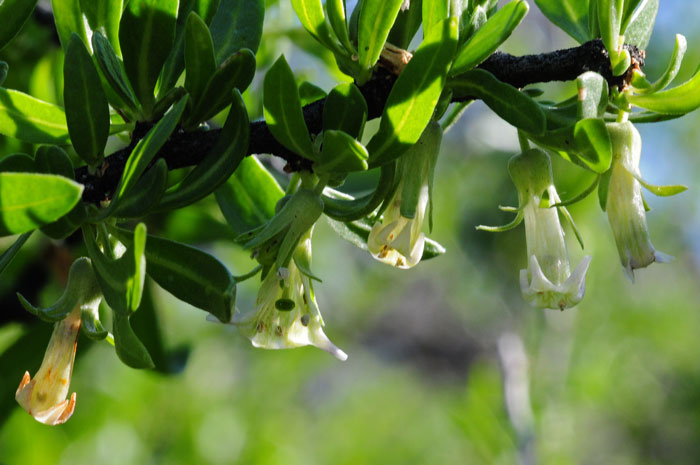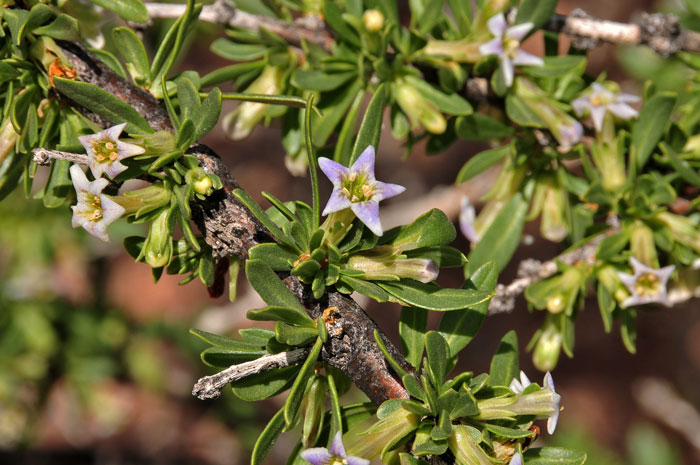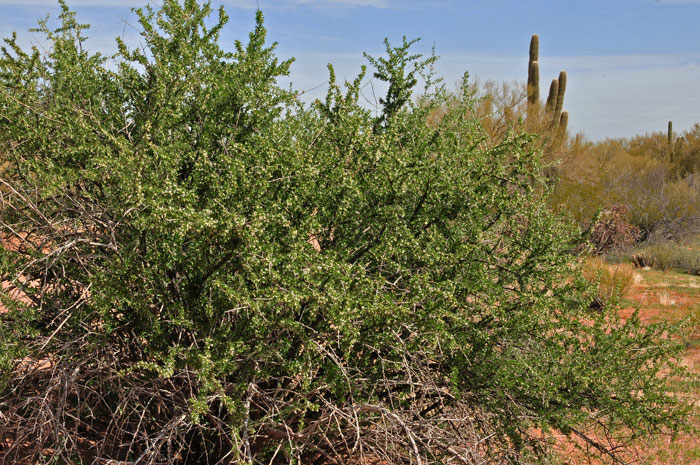Lycium macrodon, Desert Wolfberry




Scientific Name: Lycium macrodon
Common Name: Desert Wolfberry
Also Called: Boxthorn, Wolfberry (Spanish: Frutilla)
Family: Solanaceae, Nightshade or Potato Family
Synonyms: ()
Status: Native
Duration: Perennial
Size: Up to 9 feet more or less.
Growth Form: Shrub; twigs tomentose when young; rigidly branching; spiny; old branches dark brown to black.
Leaves: Green, bright green; mostly glabrous, leaves fascicled in groups of 3 to 6; linear spatulate to obovate or oblong-lanceolate; leaves with short petioles or sessile.
Flower Color: Greenish-white to pale lilac with dark veins; flowers pendulous, solitary; calyx lobes linear, equally to twice as long as the tube; corolla glabrous; fruit constricted below the middle.
Flowering Season: February to April and throughout the year with sufficient moisture
Elevation: 800 to 2,500 feet.
Habitat Preferences: Common along washes and on dry slopes, in desert or semi desert areas.
Recorded Range: Lycium macrodon is rare in the United States where it is found only in Arizona in Maricopa, Pima, Pinal and Yuma counties. This species is also native to northern Mexico.
North America & US County Distribution Map for Lycium macrodon.
U.S. Weed Information: No information available.
Invasive/Noxious Weed Information: No information available.
Wetland Indicator: No information available.
Threatened/Endangered Information: No information available.
Genus Information: In North America there are 22 species and 38 accepted taxa overall for Lycium. World wide, The Plant List includes 88 accepted species names and includes a further 42 infraspecific rank for the genus.
In the Southwestern United States, Arizona there are 11 species of Lycium, in California there are 12 species, Nevada and Texas each have 7 species, New Mexico and Utah each have 5 species. All data is approximate and subject to taxonomic changes.
Comments: Lycium macrodon has a larger, trumpet-shaped floral tube than most other Wolf Berries.
In Southwest Desert Flora also see Arizona Desert-thorn, Lycium exsertum and Fremont's Thornbush, Lycium fremontii.

